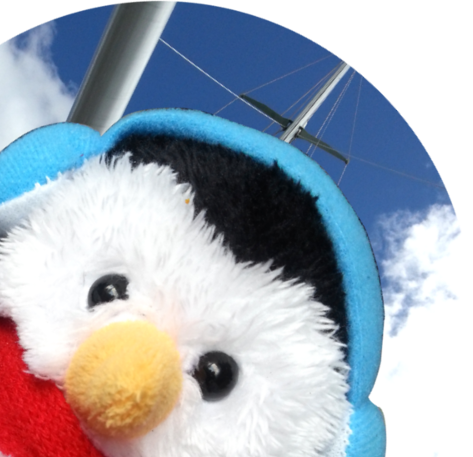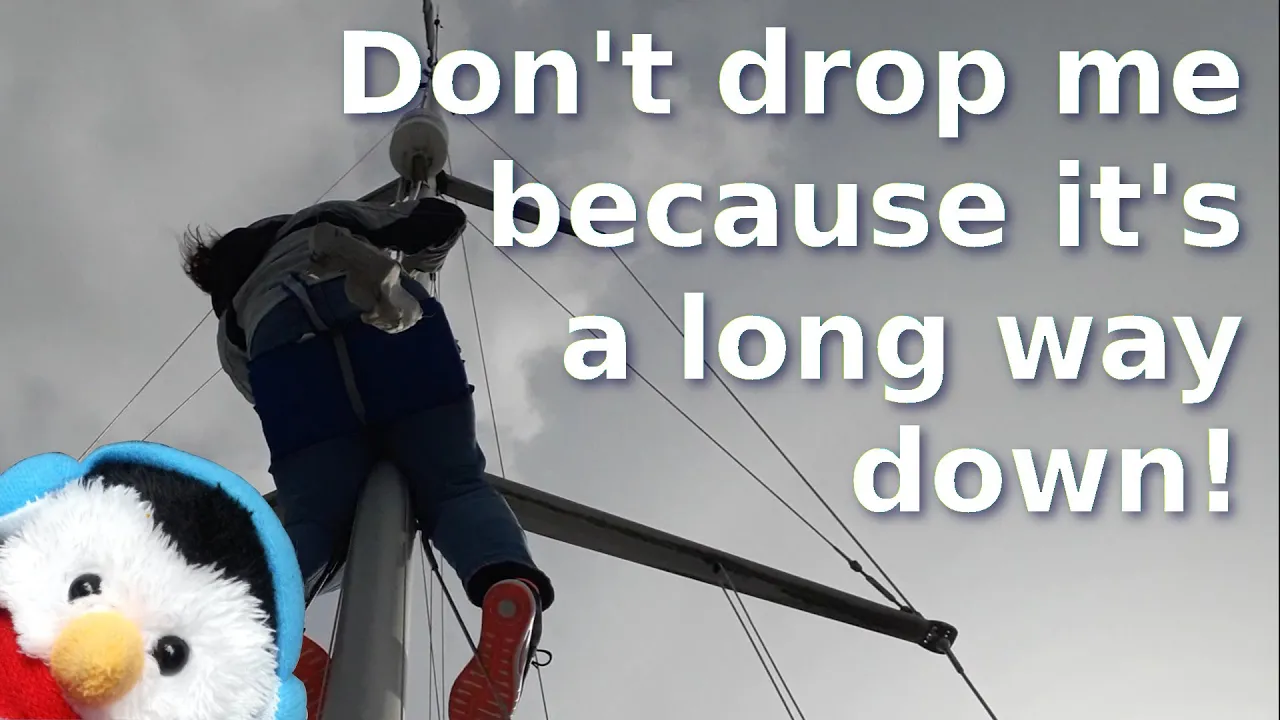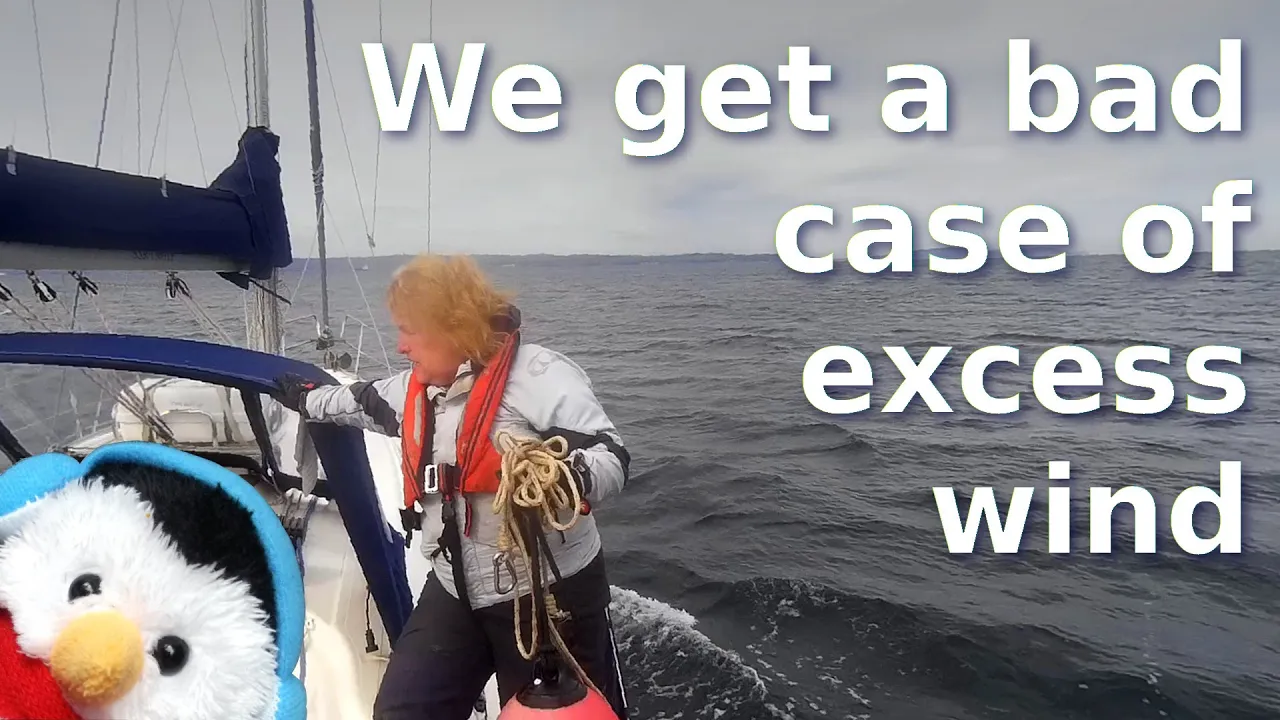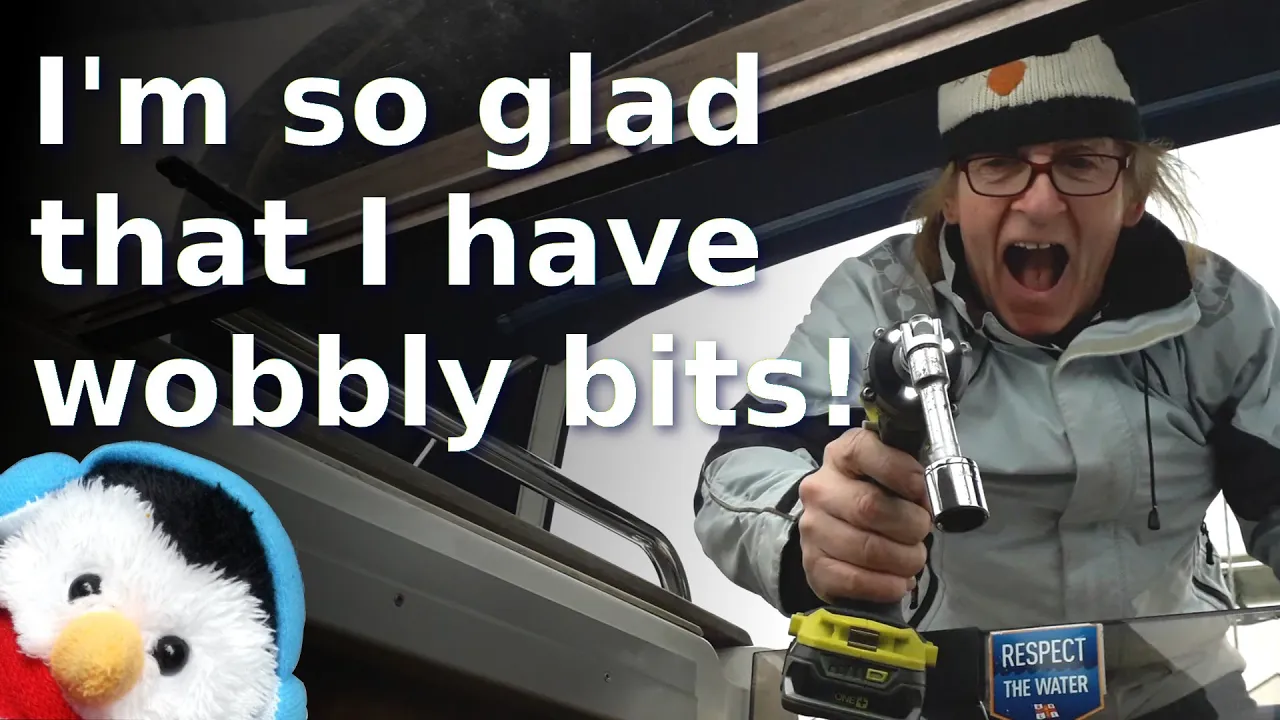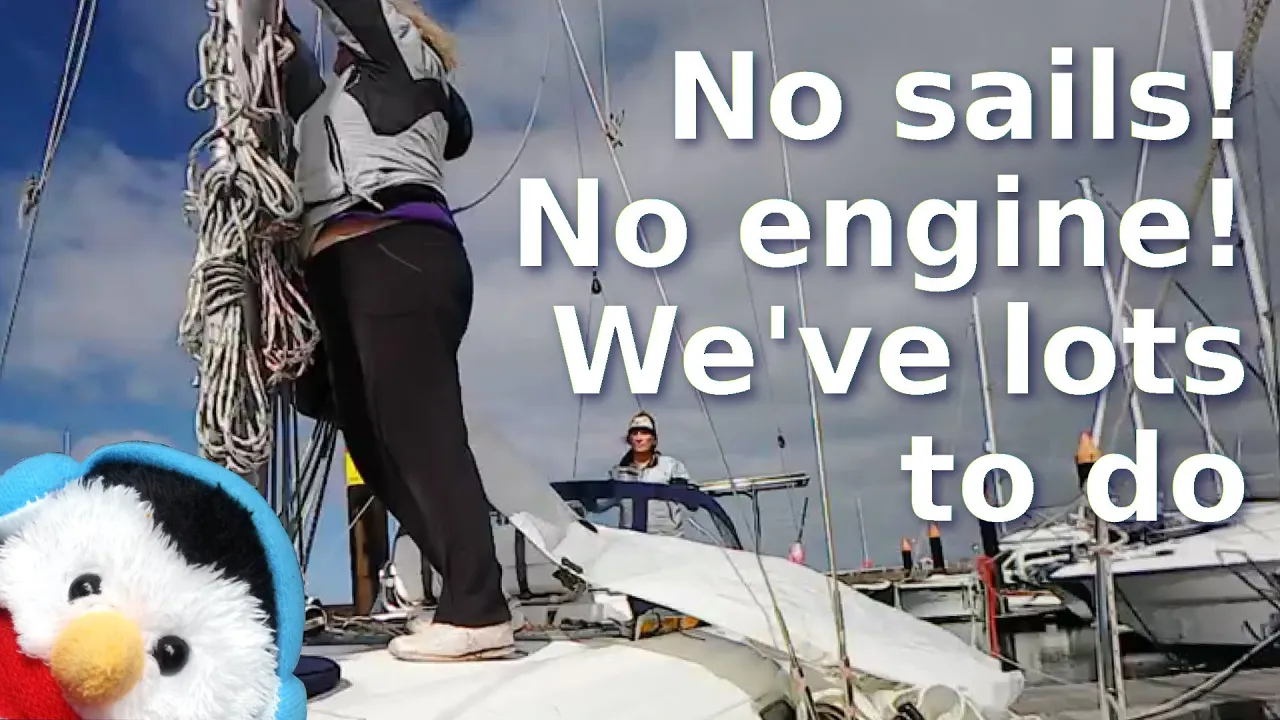Due to the truly rotten weather our side panels had got really baggy, so I decided to make them shorter, but first I thought that I would share all the hints and tips of making the panels in the first place.
Making a side panel
- Measuring the panel - When taking the measurements for your side panel, it is important that you have a good margin for turnover around the outside. I used a turnover of about 6cm folded twice so that there was a 3cm hem all around. This is so that you have a good amount of fabric to put grommets in. The height of the finished panel should be the height of your top rail take off 5 - 10cm. This gap at the bottom is so that water on your deck can run off. You also do not want the side panel interfering with any haul out lines you may have for your Genoa or jib. The length of the side panel needs to be at least 4-6cm shorter than the length between the stanchions. You need it to be shorter, so that you can pull the fabric tight. Mine was exactly the right length to start, that is why my side panels went baggy.
- Threads and needles - You need UV resistant thread to withstand the fact that the the panels are outside 24/7 and you need special canvas needles to go through the fabric
- Adding lettering - Once you have worked out the position of your lettering chalk around the outside of the letters, this is so that you know the position of the letters. You can stick down one letter at a time with double sided quilters tape. If you are using a domestic sewing machine like I did it is pointless trying to stick down more lettering because when you are sewing the letters on, you have to manipulate all the other fabric and this manipulation puts a lot of strain on the bond between the loose letters and the fabric. In the end I used a simple zigzag stitch to add the letters and I stitched only short sections at a time. The reason I did this was to keep the manipulation of the fabric to a minimum as I sewed. It did mean that I had to knot the threads together more often, but both my sewing and my letters were neat, which just makes for a better job in the long run. You must use the knotting technique to finish you stitching as going backwards and forwards, which is the other technique for finishing sewing will damage the vinyl lettering too much.
- Grommets - Using the right term is the first tip that I can share on this, I used the word rivets to start as that is what I thought they were and this got me into all sort of issues when I was given a rivet tool, which would of been great for pitting rivets in a mast, but not great for adding grommets to fabric. Do not bother using the grommet tools found in fabric shops, they are just not up to the job. In the end I used a tool from Drabber called a Brass Grommet set. This really worked well as it is designed for adding grommets to marques, so is fit for purpose. Lastly add the ring onto the back of the panel and make sure you do the hammering at the back.
- Cordage - If for any reason you want your cordage to run through your fabric in any way, then you must protect the fabric where the cordage runs through the fabric. This can be done by using the grommets, but it can also be done by webbing. For example, I ran a cord through the bottom seam so I could of added a grommet prior to sewing the seam together, or you can add webbing around the hole like I did, after the panel is made. You can machine stitch the webbing on where the cordage will not run, but seeing as where the cord runs you only want on layer of fabric, then a little bit of hand sewing is needed. If you want to keep the cord free, which is what we wanted at the top of the panel then you can add either loops of webbing or loops of canvas.
Making Winch covers
- Elastic - Adding elastic around the central section of the winch cover is a really good tip, as we have had some dreadful weather and our winch covers are still with us, while the ones our previous owner left with no elastic blew off really quickly. Do make sure that the elastic is on the inside as the elastic will just perish in UV-light.
In Bangor
After a season out sailing my panels had become baggy, this is why you will make your panel shorter than the length between the stanchions. You can always pull them tight, but baggy side panels just don't look great. My only solution for shortening the panels was reducing the length of panel between the Salty and the Lass, which was exactly what we did.
As we had to remove the life lines, we used the opportunity to visually inspect the lines. All that was needed for that was to add cloth tape, where the line runs through stanchion
